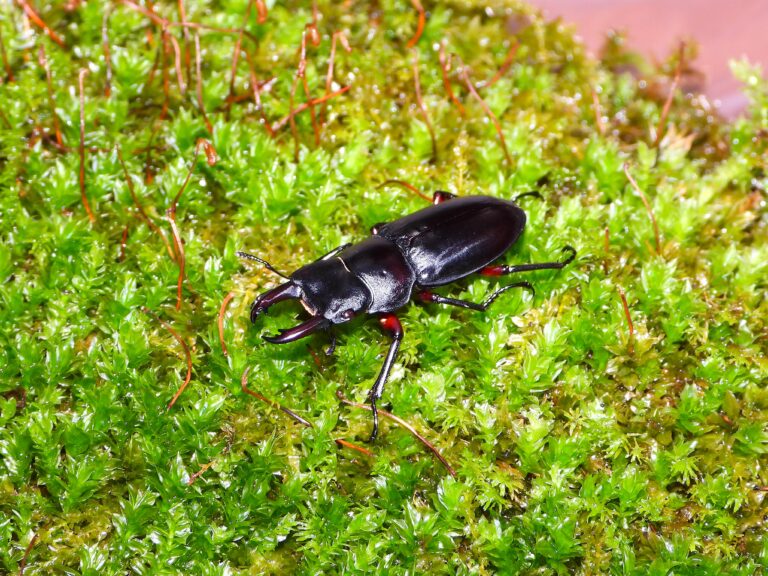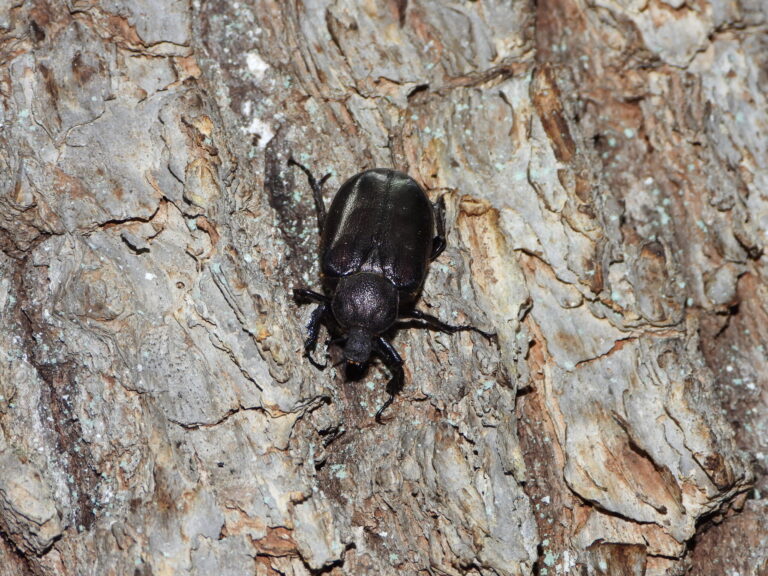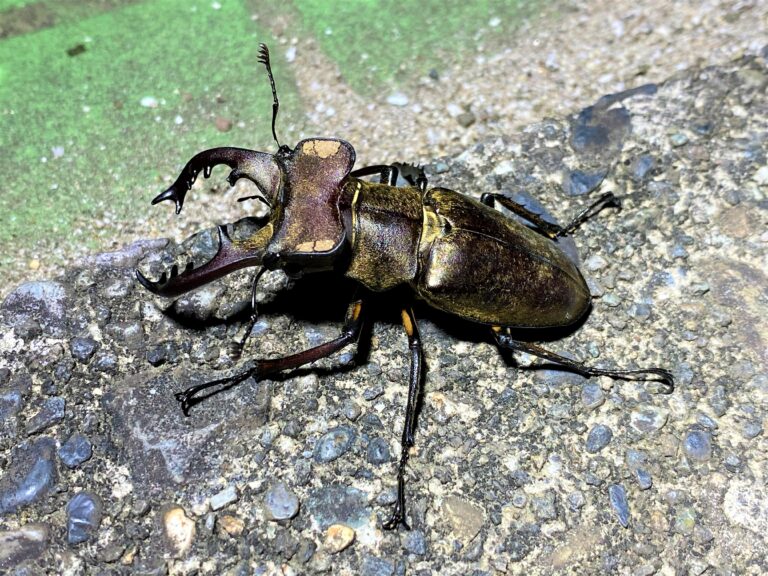White-striped Longhorn Beetle (Batocera lineolata) – Wildlife of Japan
Introduction
The White-striped Longhorn Beetle is one of Japan’s largest longhorn beetles and a familiar summer insect in wooded areas. Adults often appear from early June through August, sometimes flying to lights at night in parks or near forest edges. Although impressive in size, this species can be a pest, as its larvae bore into living trees such as chestnuts and oaks.
Appearance
Adults measure about 45–60 mm in body length. The body is blackish-gray and covered with fine short hairs, giving it a slightly dusty look. The elytra show pale yellowish to white broken lines running lengthwise, the feature that gives this species its Japanese name “Shirosuji,” meaning “white stripe.” Males usually have longer antennae than females.
Habitat & Distribution
This species is widely distributed in Japan, found on Honshu, Shikoku, Kyushu, and nearby islands such as Sado, Oki, Tsushima, and Amami. It lives in mixed and broadleaf forests, as well as in parks and wooded suburbs. Outside Japan, B. lineolata occurs in China, Korea, Taiwan, and parts of Southeast Asia.
Behavior
Adults are mainly nocturnal and strongly attracted to lights. They fly actively during warm nights in early summer. Their life cycle takes about three years: larvae live inside trees for several seasons before emerging as adults in late spring. Adults can be seen feeding on tree sap and the bases of leaves.
Diet
Larvae bore into the trunks of various broadleaf trees, including oak, chestnut, willow, and camphor. They feed on the wood (xylem), which can weaken or kill living trees. Adults sometimes feed on bark and tender twigs.
Reproduction
Females chew small spiral scars on tree trunks, usually around 50–150 cm above the ground, and lay a single egg beneath the bark at each site. The larvae tunnel deeper as they grow, and adults emerge by creating round exit holes in early summer.
Conservation Status
The species is common and not considered threatened. However, due to larval feeding damage, it is treated as a forestry and orchard pest in some areas. Control methods are limited since larvae develop deep within the wood.
Author’s Impression
On a warm summer evening, I once found a huge silhouette clinging to a park tree—it was a White-striped Longhorn Beetle. Its size and calm presence under the streetlight perfectly captured the atmosphere of Japan’s summer nights. In the past, this species could be seen almost anywhere, but as traditional satoyama landscapes suitable for egg-laying have declined, encounters have become rarer than before.

A newly emerged White-striped Longhorn Beetle (Batocera lineolata) leaving its exit hole in the trunk.







